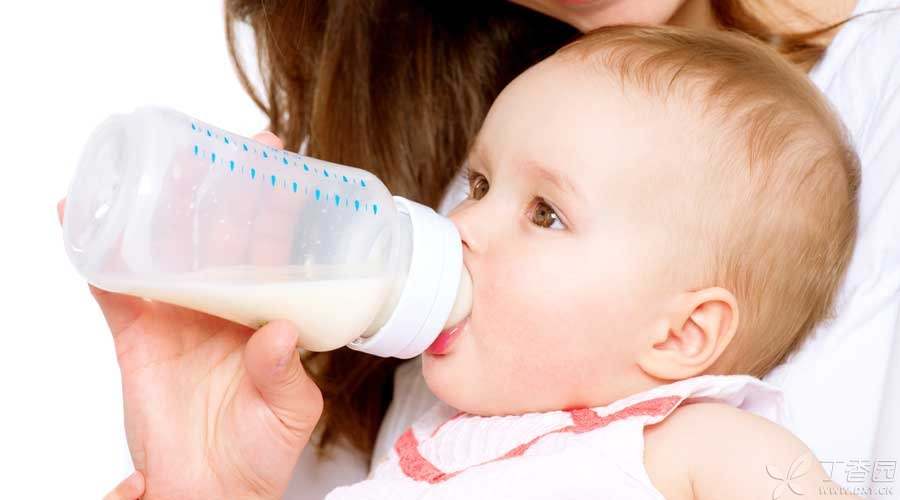
Why should milk powder be [segmented]? Perhaps many novice parents will have this question.
The most fundamental reason is that the baby is at the peak of growth, the nutritional needs have changed greatly in a few short years, and the dietary structure has gradually shifted from pure milk to ordinary family meals.
As an important source of nutrition, milk powder’s nutrient content also needs to meet the baby’s nutritional needs as much as possible.
Therefore, it is very meaningful for the dads and nannies who are choosing milk powder for their babies to understand the [grade] of milk powder.
Formula milk powder is generally [divided into four sections]
In the national food standards, infant formula foods are generally divided into two sections, one is for infants (0-6 months old), the other is for older infants (6-12 months old) and infants (12-36 months old).
However, the segmentation methods of infant formula milk powder sold in the domestic market are different. The reason is the result of comprehensive consideration of production management, quality control, marketing, nutrition principles and other aspects based on the product standards of formula milk powder.
Common segmentation methods in the market are:
- A period of milk powder: suitable for 0 ~ 6 months old; Second-stage milk powder: suitable for 6-12 months old; Three-stage milk powder: suitable for 12-36 months old; Four-stage milk powder: suitable for 36 ~ 72 months old.
How to eat milk powder of different grades is appropriate?
People often ask, is it okay for the baby to eat milk powder earlier this month?
Although this will not endanger the baby’s life, considering meeting the baby’s nutritional needs, it is still recommended to choose the corresponding milk powder according to the age of the month.
For example, the energy density in one-stage infant formula (0-6 months old) is generally lower than that in two-stage infant formula (6-12 months old), while the fat energy supply ratio of the former is much higher than that of the latter. Because fat is an important energy source for infants in the early stage, the proportion of fat energy supply in food should gradually decrease afterwards.
At the same time, parents should strictly mix milk powder according to the recommended proportion on the product label. Too thick or too thin milk powder is not conducive to the baby’s nutrition intake.
For babies over 1 year old, under other balanced and rich diets, it is actually possible to consider drinking milk directly. However, the problem of supplementary feeding in our country is quite prominent, and many families do not implement it very well. Therefore, formula milk powder for babies over 1 year old is still useful.
How to convert milk powder of different grades?
What we are talking about here is the problem of “milk transfer” that many parents are distressed about. In fact, we don’t need to be too nervous. Different brands and different stages of milk powder have different tastes, which makes babies feel unfamiliar and refuse. It is entirely possible to rely on the method of milk transfer to gradually improve.
Almost all brands will give [milk transfer] reminders on the sales page. The following figure is for reference.
Take the baby’s five meals of milk powder a day as an example, the first meal every morning, and so on, the second, third, fourth and fifth meals:

Note: [Old] represents the milk powder currently fed and [New] represents the milk powder to be converted.
What are the precautions when transferring milk?
-
The above milk transfer method takes 3 days for each replacement of old milk powder as an example. For babies with slightly weak digestion ability, the adaptation time can be appropriately prolonged, and milk transfer can be continued after the baby’s skin and stool are not abnormal.
-
Don’t turn milk when your baby is ill.
-
Don’t add new supplementary foods during milk transfer;
-
Avoid the vaccination period and transfer milk 7-10 days after vaccination.
Don’t worry about breast milk [subsection]
If it is exclusively breast-fed within six months and can even breast-feed the baby to the age of two later, under the condition of good nutritional status, parents need not worry about the [segmentation] problem as long as they pay attention to supplementing vitamin D for the baby and give appropriate and balanced supplementary foods.
Because the composition of breast milk is the best, it is not static and will naturally meet the needs of the baby with the increase of age.
Responsible Editor: BruceLi
Copyright of Clove Garden. No reprinting is allowed without permission.
References:
1. Compiled by Chinese Nutrition Society. Reference Intake of Dietary Nutrients for Chinese Residents (2013 Edition). Science Press “M”, 2014, pp. 21-22.
2. Aptamil Milk Transfer Guide.
